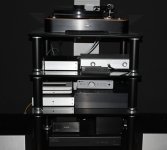Beautiful work Cody!
If you need a CRCRC power supply board I'll happily exchange a couple for those VFET amps!
If you need a CRCRC power supply board I'll happily exchange a couple for those VFET amps!

Haha, I actually have a couple of your boards waiting to be built up. Otherwise, done deal! 😉
Here are some power supply
implementations and their effect upon noise. The Murata NDTD1215C was used in Cordell's "THD Multiplier" IIRC. With respect to noise, owing to the cap multiplier on the JFET stage, there isn't a whole lot of difference. Regrettably, the "Simple Switcher" has gone to its heavenly reward and is now unobtanium.
implementations and their effect upon noise. The Murata NDTD1215C was used in Cordell's "THD Multiplier" IIRC. With respect to noise, owing to the cap multiplier on the JFET stage, there isn't a whole lot of difference. Regrettably, the "Simple Switcher" has gone to its heavenly reward and is now unobtanium.
Attachments
Applauding your first choice of op-amp. These JRCs are the second set I've heard in my Pearl 3 and I'm reluctant to pull them out, they're so good.Another Pearl 3 birthed. I salvaged a chassis, K170’s, etc from my Pearl 2 build. The small boards are nice, so I want to go with a smaller, steel chassis in the future and optimize my wiring scheme a bit. Using a simple CRC outboard supply for now, also from Pearl 2 (though I downsized the toroid). Anyways, it’s done and sounds great - thanks Wayne and co for your efforts!
I ultimately put the OPA1656 in mine on SOIC to DIP adaptors, with the R27 current at 3.5 mA. It is hard to imagine a better sounding phono Preamp! And it forced me to face my fear of SMD components. Thanks, Wayne!
Hello,Here are some power supply
implementations and their effect upon noise. The Murata NDTD1215C was used in Cordell's "THD Multiplier" IIRC. With respect to noise, owing to the cap multiplier on the JFET stage, there isn't a whole lot of difference. Regrettably, the "Simple Switcher" has gone to its heavenly reward and is now unobtanium.
What is at the input?
Resistor, shorted, cartridge plugged in or what?
Thanks DT
YES........ Finally my P-3 boards, @Algar_emi version landed in the mailbox.
Thanks for speedy post from Canada all the way to Denmark.
Just need to finish up a tube-MC riaa with Lundahl trafo´s first, then it´ll be PEARL-3-time 😛

Thanks for speedy post from Canada all the way to Denmark.
Just need to finish up a tube-MC riaa with Lundahl trafo´s first, then it´ll be PEARL-3-time 😛
Input shorted. RIAA compensation capacitors disabled. The noise level is close to Sam Groner's "Low Noise Laboratory-grade Measurement Amplifier" from Linear Audio.Hello,
What is at the input?
Resistor, shorted, cartridge plugged in or what?
Thanks DT
@jackinnj ,Input shorted. RIAA compensation capacitors disabled. The noise level is close to Sam Groner's "Low Noise Laboratory-grade Measurement Amplifier" from Linear Audio.
Thank you for the addition information.
Is it possible to Run a plot of the same setup with a 48K FFT Length, 3 averages , with Level (dBV) or Level (Vrms) on the Y axis and Frequency on the X axis? 48K FFT Length gives a near approximation of the actual noise floor.
This is the type of FFT plot commonly used to show Harmonic Distortion peaks (if any)
Thanks DT
I am away from the bench for several days.
Sample FFT Plot:
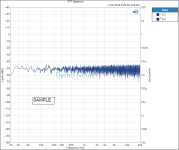
I got power on P3 with UDP3 for the first time.
Input voltage (output from UDP3) is -+18.95V loaded with P3.
Idle voltage from UDP3 is a little bit above -+19V.
The picture with two DMM's shows voltage over 22R emitter resistor.
0.312V and 0.309 for the two channels. Should be close enough. It is about 14mA bias for PP-output transistors.
I tried to test the amp with a 1000 Hz sinus generator but difficult to get a low clean signal. But I was just interesting to see if the amp could do something that looks right. Scope set to 5V/Div. It will probably be better with top cover on and amp put into the right environment. The gain setting was MM.
When dip switch sticker is put inside top cover and top cover is on I will think about putting the riaa in my system.
It will be a task for the weekend. Then I can think about the right pre-amp combinations.........and how to place everything.
Input voltage (output from UDP3) is -+18.95V loaded with P3.
Idle voltage from UDP3 is a little bit above -+19V.
The picture with two DMM's shows voltage over 22R emitter resistor.
0.312V and 0.309 for the two channels. Should be close enough. It is about 14mA bias for PP-output transistors.
I tried to test the amp with a 1000 Hz sinus generator but difficult to get a low clean signal. But I was just interesting to see if the amp could do something that looks right. Scope set to 5V/Div. It will probably be better with top cover on and amp put into the right environment. The gain setting was MM.
When dip switch sticker is put inside top cover and top cover is on I will think about putting the riaa in my system.
It will be a task for the weekend. Then I can think about the right pre-amp combinations.........and how to place everything.
Attachments
Build complete! First impressions, sounds fantastic! I had no input on the right channel at first , where I then discovered I had inadvertently set the dip switches incorrectly… Flick of a few switches and I’m back in business! Dead quiet and fantastic imaging and channel separation. I started with Nathaniel Rateliff and the night sweats to see how his booming voice sounds on the Pearl 3, and wow! Just great. Thanks to all who put this project together.

When dip switch sticker is put inside top cover and top cover is on I will think about putting the riaa in my system.
It will be a task for the weekend.
Please get it attached to turntable and system as soon as you can to see if your grounding scheme is quiet.
I could be a good idea as if I just exchange the NAD riaa with P3 I will much more gain than needed. So if it is quiet there it is very quiet.
I will get about 3x output voltage compared to NAD riaa.
I will get about 3x output voltage compared to NAD riaa.
Ok, I set it up so will be late before I go to bed.
At picture P3 and Whammy below TT.
The next shelf UPD3 and IronPre in the black box set to 12 dB.
One the floor is 2 x LSB mono blocks.
When Whammy vol. set to 9 o'clock I have normal listening level.
It is very quiet. No hum and just slight "ssshhhyyy" noise from tweeter if I put my ear as close as I can get my ear to it.
If I crank up the volumen to max. I can hear "ssshhhyyy" in listening position and very slight hum.
Sound if very good. Compared to NAD I would say "dry and detailed". NAD was warmer (maybe dull) compared to P3.
This is a very first listening impression before everything is warmed up and optimal.
I need later to optimize main wires and signal wires behind so they don't mix as much as they do now.
My idea was to try a passive pre (I have build one which is just a 10k Goldpoint attenuator in a box).
I think then normal listening level will be about 1 o'clock. The P3 can drive 10k and 10k + short RCA cables should be able to drive 200k input impedance in IronPre.
At picture P3 and Whammy below TT.
The next shelf UPD3 and IronPre in the black box set to 12 dB.
One the floor is 2 x LSB mono blocks.
When Whammy vol. set to 9 o'clock I have normal listening level.
It is very quiet. No hum and just slight "ssshhhyyy" noise from tweeter if I put my ear as close as I can get my ear to it.
If I crank up the volumen to max. I can hear "ssshhhyyy" in listening position and very slight hum.
Sound if very good. Compared to NAD I would say "dry and detailed". NAD was warmer (maybe dull) compared to P3.
This is a very first listening impression before everything is warmed up and optimal.
I need later to optimize main wires and signal wires behind so they don't mix as much as they do now.
My idea was to try a passive pre (I have build one which is just a 10k Goldpoint attenuator in a box).
I think then normal listening level will be about 1 o'clock. The P3 can drive 10k and 10k + short RCA cables should be able to drive 200k input impedance in IronPre.
Attachments
It is very quiet. No hum and just slight "ssshhhyyy" noise from tweeter if I put my ear as close as I can get my ear to it
Fantastic! Well done!
👏 👏
My idea was to try a passive pre (I have build one which is just a 10k Goldpoint attenuator in a box).
Pearl will absolutely be able to drive that, and is worth trying.
In my experience and opinion, a "passive preamp" rarely, if ever, sounds as good as active. YMMV, of course...
What is quiet?
My speakers are 94 dB and if I put ears close to tweeter I can hear slight "sshhyy". No hum. Nothing I can hear from mid and bas speakers with ear close.
The gain is MM = 49 dB + Whammy (6-9 dB) + IronPre (12 dB).
I can't remember exactly what I ended up with in Whammy regarding gain.
I think it is quiet. With ear 30 cm from tweeter I can hear no noise.
My speakers are 94 dB and if I put ears close to tweeter I can hear slight "sshhyy". No hum. Nothing I can hear from mid and bas speakers with ear close.
The gain is MM = 49 dB + Whammy (6-9 dB) + IronPre (12 dB).
I can't remember exactly what I ended up with in Whammy regarding gain.
I think it is quiet. With ear 30 cm from tweeter I can hear no noise.
The gain is MM = 49 dB + Whammy (6-9 dB) + IronPre (12 dB).
why not including another headphone preamp, or two, in that chain?
nothing wrong having few decades of db too much.....

- Home
- Amplifiers
- Pass Labs
- Pearl 3 Burning Amp 2023
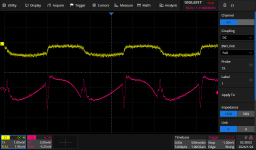
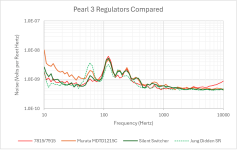
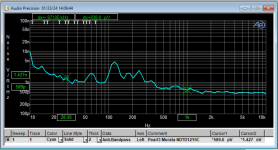

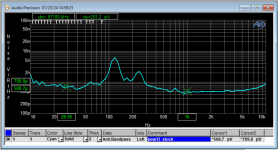
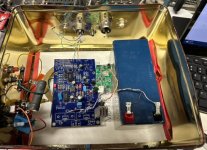
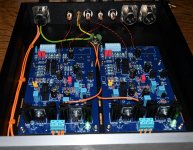
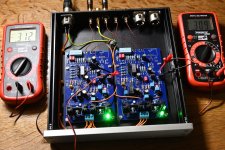
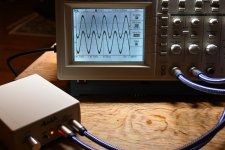
 “Son of a b1tch! Gimme a drink…”
“Son of a b1tch! Gimme a drink…” 
